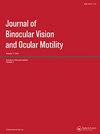Strabismus Surgery: Do Millimeters Matter?
Q3 Medicine
Journal of Binocular Vision and Ocular Motility
Pub Date : 2023-04-28
DOI:10.1080/2576117X.2023.2208019
引用次数: 0
Abstract
Who hasn’t longingly hoped for a dose–response curve or table showing prism diopters/millimeter (PD/mm) that would solve all the problems of strabismus surgery? Thinking back to the early years of my career, the first question I asked of skilled surgeons was, “What surgical table do you use?” Subsequently, I realized there were different tables with different surgical doses advocated by different experts. Despite the sometimes wide variation in the tables, the reported results from the different tables were surprisingly similar. But even if I strictly relied on any given table, the surgical outcomes were inconsistent. My initial discouragement prompted me to try to understand why there was so much variability. This raised the intriguing question, “Do numbers really matter?” In 2002, during my fellowship in Charleston, SC, USA, Dr. Ed Wilson told me that during a meeting he had attended, Mexican colleagues referred to American strabismus surgeons as “millimeter surgeons” (Ed Wilson personal communication). Apparently, not all strabismus surgeons rely as heavily on surgical formulas as those in the USA. After hearing that, the question, “Do numbers really matter?” really obsessed me! In 1951, Scobee wrote, “The amount of surgical correction obtained in a patient with esotropia is usually directly proportional to the deviation present before surgery and is not particularly related to the amount of surgery performed as measured in millimeters.” He divided operations into three classes: Class 1: esotropia <50PD, for which he performed one medial rectus recession of 6 mm; Class 2: esotropia >50PD, for which he performed bilateral medial rectus recession of 6 mm; and Class 3: if amblyopia was present, for which he performed unilateral surgery consisting of a medial rectus recession of 6 mm plus a lateral rectus resection of 6–7 mm. He reported that if one patient has 15° of esotropia and another one has 30° of esotropia, surgery will result in 15° and 30° of correction, respectively, even if they receive the same amount of surgery. In 1989, Kushner and coauthors reported that axial length played a role in the response to surgery. They found a significant correlation between the response to strabismus surgery and axial length in patients with esotropia, but the correlation coefficient they found suggested that only 28% of the variance in the response to strabismus surgery can be attributed to axial length. Thus, a surgical formula that takes axial length into account should decrease the variability in response to strabismus surgery, but will not eliminate it. Poor correlation was found between axial length and response to surgery in exotropic patients. However, in 1993 Kushner subsequently found that the response to strabismus surgery (PD of change per millimeter of rectus muscle recession) correlated significantly with the preoperative deviation for esotropic and exotropic patients and that axial length, age, or refractive error were not significant independent predictors. Over a 40-year period, Kushner kept a record of masked measurements obtained at surgery in about 10,000 patients. He noted and recorded the amount of recession actually performed, the planned amount of recession based on his preferred surgical table, and the preand post-operative deviation. He found that the mean response at 1 week after surgery for esotropes was 2.8 PD more in patients in whom the actual recession performed totaled 1.0 mm more than what was planned and 2.7 PD less if the actual surgery recession performed totaled 1.0 mm less than what was planned. For intermittent exotropes, the results were similar. For those patients in whom the actual surgery performed differed from the planned amount by a total of 1.5 mm, the discrepancy was 4.7 PD for esotropes and 5.1 PD for intermittent exotropes. These differences were all significant (P < .05). He conceded that an assessment made at 1 week after surgery does not foretell the final result, but it does reflect the immediate response to surgery before it is contaminated by sensory adaptations. This suggests we should be meticulous with respect to measurements of the pre-operative deviation and the amount of surgery we perform. This leads to a conundrum. On one hand, we have Scobee’s suggestion that millimeters do not matter in determining the response to strabismus surgery. On the other hand, we have Kushner’s observations that, in fact, small changes in the amount of rectus muscle recession have a measurable impact on the response. How could these opposing concepts both be correct? In 2018, in his Costenbader lecture, Steven Archer wrote that the size of the preoperative angle is more important than the amount of surgery performed in predicting the JOURNAL OF BINOCULAR VISION AND OCULAR MOTILITY 2023, VOL. 73, NO. 3, 59–60 https://doi.org/10.1080/2576117X.2023.2208019斜视手术:毫米重要吗?
谁不渴望有一个显示棱镜屈光度/毫米(PD/mm)的剂量反应曲线或表格来解决斜视手术的所有问题呢?回想我职业生涯的早期,我问熟练的外科医生的第一个问题是:“你用什么手术台?”后来,我意识到不同的专家提倡不同的手术剂量有不同的表。尽管这些表格有时差异很大,但不同表格报告的结果却惊人地相似。但即使我严格依赖任何给定的表格,手术结果也是不一致的。我最初的沮丧促使我试图理解为什么会有如此多的变化。这就提出了一个有趣的问题:“数字真的重要吗?”2002年,我在美国南卡罗来纳州查尔斯顿做研究员期间,Ed Wilson医生告诉我,在他参加的一次会议上,墨西哥同事称美国斜视外科医生为“毫米外科医生”(Ed Wilson个人交流)。显然,并不是所有的斜视外科医生都像美国那样严重依赖手术配方。听到这些之后,“数字真的重要吗?”“真的让我着迷!”1951年,Scobee写道:“内斜视患者的手术矫正量通常与手术前的偏差成正比,与以毫米为单位的手术量没有特别的关系。”他将手术分为三类:第一类:内斜视50PD,双侧内侧直肌后退6mm;第3级:如果存在弱视,他进行了单侧手术,包括内侧直肌后退6毫米和外侧直肌切除6 - 7毫米。他报告说,如果一名患者的内斜视为15°,另一名患者的内斜视为30°,即使他们接受的手术量相同,手术也会分别导致15°和30°的矫正。1989年,Kushner及其合作者报道了轴向长度在手术反应中起作用。他们发现内斜视患者对斜视手术的反应与眼轴长度之间存在显著的相关性,但他们发现的相关系数表明,斜视手术反应的差异中只有28%可归因于眼轴长度。因此,考虑到眼轴长度的手术公式应该能减少斜视手术后的变异性,但不能完全消除。外向型患者的轴向长度与手术反应之间相关性不强。然而,在1993年,Kushner随后发现斜视手术的反应(每毫米直肌后退变化的PD)与内斜视和外斜视患者的术前偏差显著相关,而眼轴长度、年龄或屈光不正不是显著的独立预测因素。在40年的时间里,库什纳保存了约1万名患者在手术中获得的隐藏测量值记录。他注意并记录了实际执行的退退量,基于他的首选手术台面的计划退退量,以及术前和术后的偏差。他发现,手术后1周内斜视患者的平均反应,如果实际退行比计划多1.0 mm,则增加2.8 PD,如果实际手术退行比计划少1.0 mm,则减少2.7 PD。对于间歇性的外生植物,结果是相似的。对于那些实际手术与计划量相差1.5 mm的患者,内斜体的差异为4.7 PD,间歇性外斜体的差异为5.1 PD。差异均有统计学意义(P < 0.05)。他承认,手术后一周的评估并不能预测最终结果,但它确实反映了在被感觉适应污染之前对手术的直接反应。这表明我们应该对术前偏差和手术量的测量一丝不苟。这就引出了一个难题。一方面,我们有Scobee的建议,毫米不影响决定斜视手术的反应。另一方面,我们有库什纳的观察,事实上,直肌萎缩量的微小变化对反应有可测量的影响。这两个相反的概念怎么可能都是正确的呢?2018年,Steven Archer在他的科斯滕巴德讲座中写道,在预测双目视觉和眼运动杂志2023年第73卷第73期时,术前角度的大小比手术的数量更重要。3,59 - 60 https://doi.org/10.1080/2576117X.2023.2208019
本文章由计算机程序翻译,如有差异,请以英文原文为准。
求助全文
约1分钟内获得全文
求助全文
来源期刊

Journal of Binocular Vision and Ocular Motility
Medicine-Ophthalmology
CiteScore
1.20
自引率
0.00%
发文量
42
 求助内容:
求助内容: 应助结果提醒方式:
应助结果提醒方式:


